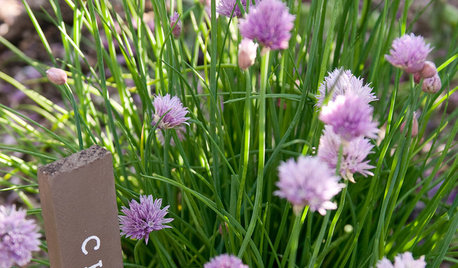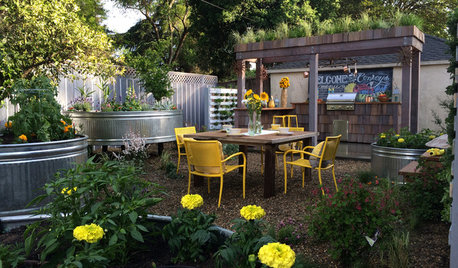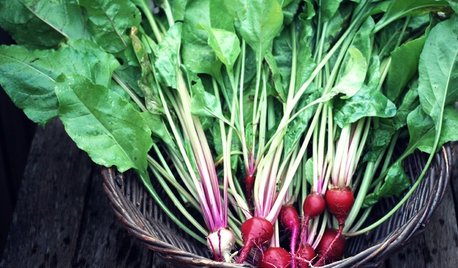First melon patch and pumpkin patch
linzelu100
11 years ago
Related Stories

MOST POPULARFalling for Color: 9 Ways With Pumpkin Orange
From racing stripes to accent walls, see how to work this vibrant hue into your home
Full Story
EDIBLE GARDENSSummer Crops: How to Grow Pumpkins
Start in spring to grow your own fall decorations and have plenty left for pies
Full Story
EDIBLE GARDENSHow to Grow Your Own Sweet Summer Crops
This guide will help any gardener get started on growing the freshest warm-season veggies and berries for summer
Full Story
KITCHEN DESIGNHouzz Call: Tell Us About Your First Kitchen
Great or godforsaken? Ragtag or refined? We want to hear about your younger self’s cooking space
Full Story
GARDENING GUIDESSimple Pleasures: Savor the First Spring Day in the Garden
How will you answer the call of the garden once the birds are chirping, the bulbs are blooming and the air is inviting?
Full Story
HOLIDAYSMercifully Minimal Halloween Decor
Don't fret last-minute Halloween decorating — sometimes just one perfect pumpkin is all the fall embellishment your front yard needs
Full Story
FIREPLACES10 Unexpected Ways to Style a Gorgeous Fall Mantel
Been there, done that with the pumpkins and corncobs? Try these wonderfully fresh ideas for a beautifully decorated mantel this autumn
Full Story
BOLD COLORZest for Orange Stays Strong in Fall 2012
From pumpkin to tangerine, this hue is still hot stuff on walls, rugs, furniture and accessories
Full Story
FARM YOUR YARDRemake Your Backyard Into a Mini Farm
You can get a taste of country life by line-drying your laundry, growing some produce or going whole hog with the critters
Full Story
EDIBLE GARDENS8 Last-Minute Additions to a Summer Edible Garden
It’s not too late to get these vegetables and herbs planted for a bountiful harvest this year
Full StoryMore Discussions







thegreatcob
linzelu100Original Author
Related Professionals
Rancho Palos Verdes Landscape Architects & Landscape Designers · Sand Springs Landscape Architects & Landscape Designers · Williamsburg Landscape Contractors · Amesbury Landscape Contractors · Cupertino Landscape Contractors · Fort Mill Landscape Contractors · Gallatin Landscape Contractors · Longmont Landscape Contractors · Newnan Landscape Contractors · Oviedo Landscape Contractors · Parkland Landscape Contractors · Irvington Landscape Contractors · Beaumont Driveway Installation & Maintenance · Concord Driveway Installation & Maintenance · Thornton Driveway Installation & Maintenancethegreatcob
linzelu100Original Author
hamiltongardener
farmerdill
linzelu100Original Author
farmerdill
linzelu100Original Author
farmerdill
rayrose
planatus
HU-469456
wayne_5 zone 6a Central Indiana